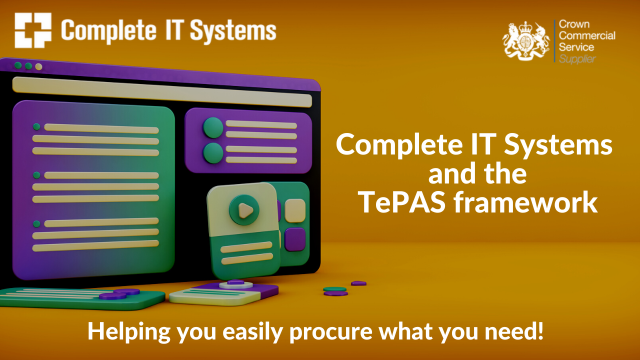- What We Do
IT Solutions, Support and Services
- Partners
- About Us
- Blog
The future of technology in the classroom – part 2
Technology is revolutionising the way we teach, and the way in which children and young people learn. Gone are the days of outdated textbooks and simple whiteboards and markers. Schools are increasingly focused on bringing classrooms into the 21st century and using technology to create more vibrant and engaging learning experiences.
In the second of a two-part blog (this way for part 1), we take a look at some of the newest technology for the classroom and the ways in which it is impacting learning, as well as what future classroom technology could look like.
Independent research
Perhaps one of the simplest ways in which new classroom technology can be used is to access the internet for research. Today’s kids tend to turn to Google to answer their questions if they have access to a smartphone, tablet, or computer, but sometimes schools are resistant to incorporating this type of independent research into the classroom.
It makes sense that schools are more eager for students to absorb learning material supplied in the classroom than information sourced from Google. It ensures that students are on the same page in regard to the curriculum. Plus, it can be tricky to figure out the accuracy and reliability of information published online.
However, these points are exactly why future classroom technology should be used to encourage independent internet research. It’s an opportunity to teach students to differentiate between reliable and unreliable online sources and to help them to use the internet in a way that enhances that which is learned in the classroom.
It can also give kids the chance to read more deeply into the topics covered in the classroom if they’re particularly interested in them. Having the ability take control of their learning could help them to get more excited about the subjects studied in class which will only enhance the learning experience.
Here are a few ways in which teachers could incorporate independent online research into their lessons:
- Ask students to use Wikipedia and Google to research for class presentations
- Set additional web research tasks for students to do if they finish classroom work earlier; this rewards fast working and gives students the opportunity to learn more about a topic
- Have students use Google first to find answers to simple questions, such as the definition of a word
- Use an interactive display at the front of the class to Google words, phrases, or topics that are new to the whole class
Some of these techniques do rely on students having easy access to the internet, either at home or during lessons. However, the future of technology in the classroom is leaning towards the availability of laptops or tablets for every student. It may be some time until we get there, but many schools are already focused on future classroom design in which exercise books and pens could be completely replaced with laptops or tablets for every pupil.
Versatile lesson delivery and presentations
The newest technology for the classroom focuses on interactive learning, and interactive display screens are the cornerstone of this trend. Interactive learning is effective because it encourages students to take charge of their own learning and forces them to engage in the class more directly than if they were to simply sit, listen, and take notes.
Interactive displays are large LED screens with touch capability. This allows teachers to deliver full-colour presentations at the head of the class, and interact directly with it by touching, tapping, or swiping at the screen and writing on it.
The advanced interactive displays at Avocor are provided with the Windows 10 operating system and have a variety of connection ports – including USB – to make it really simple for teachers to hook up laptops or USB sticks to display their presentations. Alternatively, if cloud computing is available in the school, accessing resources is even easier. Plus, the screens make it really easy to use to a variety of apps and software designed for the classroom.
Kids can benefit from this future classroom technology, too. They can:
- Interact directly with the content on the board, either alone or with their peers thanks to multipoint touch technology
- Deliver their own interactive presentations with ease
- Enjoy more varied lessons
- Learn from a wide range of media types, including text, images, video, and music
- Take part in virtual field trips, in which places and experiences can be explored via the internet without leaving the classroom
- Collaborate more readily with teachers and peers on projects
Interactive displays also make it possible to incorporate video conferencing into the classroom, which could totally transform future classroom design. It could allow students to be taught by teachers in different cities or countries, or to interact with experts all over the world to gain extra insights into the learning material. It also enables collaboration between different classes or even schools, which could boost students’ communication skills.
Future classroom design looks more and more likely to be focused on interactive learning, and the interactive display is the newest technology in the classroom to have such a vast and versatile impact on the ways in which children learn.
This content is provided from the ever-excellent Avocor blog.
Want to learn more?
Complete IT Systems have a team of Avocor specialists on hand to demo the solution, discuss business benefits and help you understand how the technology works for your organisation. There’s also a great range of resources available on the Avocor blog.
Give us a call on 01274 396 213 or use our contact form to discuss your requirements with us.








